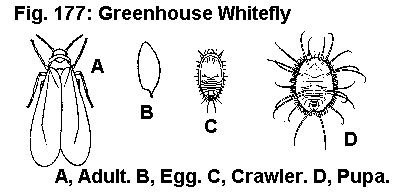 Fig. 177: Greenhouse Whitefly, Trialeurodes
vaporariorum (Westwood), Aleyrodidae, HOMOPTERA
Fig. 177: Greenhouse Whitefly, Trialeurodes
vaporariorum (Westwood), Aleyrodidae, HOMOPTERAReturn to: CFREC Home Page
Adult- About 1.5 mm long, the adult is a white insect that resembles a tiny moth.
Egg- The small oblong eggs, pale green to purple, are deposited on the lower leaf surface, often in a circle or a crescent.
Nymph- The first instar nymph is mobile and similar to a scale insect crawler. Later nymphal stages are yellowish with red eyes, and are immobile. They resemble soft scale insects, but have an orifice on the back through which honeydew is expelled.
Pupa- The oval pupa is pale green to black when parasitized. The normal color, when empty, is clear-glassy with a fringe of glassy setae, and with some long glassy setae on the dorsal surface. The pupal case sits upon a vertical palisade of closely appressed wax rods (these are readily visible in side view).
 Fig. 177: Greenhouse Whitefly, Trialeurodes
vaporariorum (Westwood), Aleyrodidae, HOMOPTERA
Fig. 177: Greenhouse Whitefly, Trialeurodes
vaporariorum (Westwood), Aleyrodidae, HOMOPTERA
A, Adult. Adults without bands across the wings. B, Egg. C, Crawler, D, Pupa. Pupal case without a dark area along the back.
Distribution- Greenhouse whiteflies are worldwide pests of greenhouse-grown ornamentals and vegetables. First discovered in England in 1856, they were found in the northeastern United States in 1870. Tropical Central or South America are suggested origins of the greenhouse whitefly.
Host Plants- Greenhouse whiteflies infest a wide variety of ornamental and vegetable crops, and they can survive outdoors during the growing season, particularly in sheltered locations. Even trees may be infested (redbud, Kentucky coffee berry, and avocado).
Damage- Infested plants become chlorotic and unthrifty. Honeydew and sooty mold further detract from the appearance of the crop. Unless controlled, greenhouse whiteflies may completely destroy the commercial value of floricultural crop.
Life History- Greenhouse whiteflies reproduce relatively slowly (one generation every 30 to 45 days), but each may lay up to 400 eggs and live as long as 2 months. Adults are usually found on the lower surface of new leaves. The new crawlers move about the plant for a day or two, often from leaf to leaf before inserting their mouthparts to feed. Once this occurs they probably do not move again until mature. The crawlers molt into nymphs and then into pupae. Finally, a new generation of whitish yellow adults emerges. They are soon covered by a white waxy bloom.
Lower greenhouse temperatures used in the culture of some bedding and potted plant varieties tend to encourage infestations, because naturally occurring parasitic wasps (Encarsia formosa) are reproductively inhibited at temperatures below 24°C (75°F).
Control of whiteflies is difficult because the eggs and immature forms are resistant to many aerosol and insecticide sprays. One must make regular applications of pesticides to control emerging adults until the last of a whole generation of immature whiteflies has emerged. However, some of the synthetic pyrethroid and synthetic insect growth-regulator pesticides are extremely effective and need not be applied as often. For specific chemical control recommendations, see your County Cooperative Extension publications on ornamental plant pests.
University of Florida/IFAS Reference to Pest Control Guides